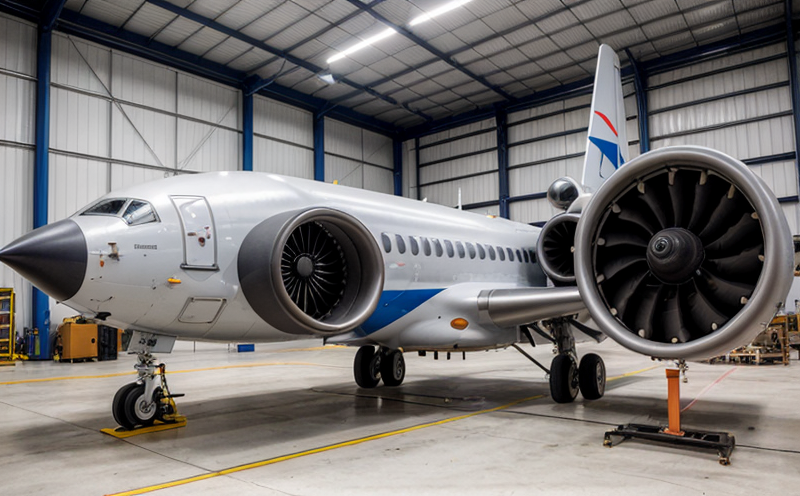Launch Vehicle Fairing Acoustic Qualification
The launch vehicle fairing plays a critical role in protecting spacecraft and payloads from harsh environmental conditions during ascent. The acoustic environment within a launch vehicle is one of the most challenging for any component, as it can exceed 150 dB peak sound pressure level (SPL). This section focuses on the specific testing required to ensure the acoustic qualification of the fairing.
The process involves subjecting the fairing to controlled acoustic environments that simulate the actual launch conditions. The goal is to verify that the fairing maintains its integrity and functions correctly under extreme noise levels, ensuring safe and reliable operation in space. This service is essential for compliance with aerospace standards such as ISO 14069 and ASTM D8297.
The testing is conducted in anechoic chambers designed to absorb reflected sound waves, ensuring accurate measurements. The specimens are typically mounted on test fixtures that replicate the actual launch vehicle configuration. The acoustic environment is generated using loudspeakers or other appropriate sources.
The qualification process involves both short-term and long-term exposure tests. Short-term tests assess the immediate response of the fairing to high-intensity sound pulses, while long-term tests evaluate its ability to withstand continuous noise over extended periods. The test parameters include frequency ranges from 20 Hz to 15 kHz, with peak SPL levels reaching up to 160 dB.
Specimen preparation is critical for accurate testing results. This includes cleaning the fairing and ensuring it is free of contaminants that could affect the test outcome. Additionally, any hardware or software modifications must be carefully documented and approved by the client before testing begins.
The instrumentation used in these tests includes high-fidelity microphones to measure sound pressure levels accurately. Data acquisition systems capture the acoustic data for analysis. The results are compared against the specified acceptance criteria, which typically involve limits on frequency response and SPL levels.
After successful qualification, detailed reports are provided summarizing the test procedures, data collected, and conclusions drawn. These reports can be used to support compliance documentation required by regulatory bodies such as NASA or ESA.
| Test Parameter | Description | Acceptance Criteria |
|---|---|---|
| Frequency Range | 20 Hz to 15 kHz | ±3 dB accuracy |
| Peak SPL | Up to 160 dB | Pass/Fail criterion based on specified limits |
| Duration of Exposure | Short-term: 3 seconds; Long-term: 24 hours | No degradation in performance |
| Repeatability | ±1 dB variation between tests | Consistent results across multiple trials |
The acoustic qualification of launch vehicle fairings is a complex process requiring precise control over environmental conditions and advanced instrumentation. It ensures that the fairing can withstand the rigorous demands placed on it during launch, contributing to the overall safety and reliability of the spacecraft.
- Ensures compliance with international standards
- Guarantees safe operation in extreme acoustic environments
- Aids in meeting stringent regulatory requirements
- Reduces risk of premature failures during launch
Benefits
- Ensures compliance with international standards
- Enhances safety and reliability during launch
- Aids in meeting stringent regulatory requirements
- Reduces risk of premature failures
- Provides accurate data for design improvements
- Supports successful mission launches
Use Cases and Application Examples
The acoustic qualification process is crucial in aerospace and defense sectors where the integrity of components like launch vehicle fairings must be guaranteed. This ensures that spacecraft can withstand the harsh acoustics of a rocket launch environment, thereby enhancing mission success.
- Verification of component design against real-world conditions
- Evaluation of material durability under extreme noise levels
- Identification and rectification of potential weaknesses in fairing construction
- Support for compliance with regulatory standards
For instance, the acoustic qualification process has been used to test various components of the Falcon Heavy launch vehicle, ensuring that it can withstand the intense acoustics during its maiden flight. Similarly, military applications such as satellite communications and missile systems benefit from this service by verifying their ability to function reliably under extreme noise conditions.





